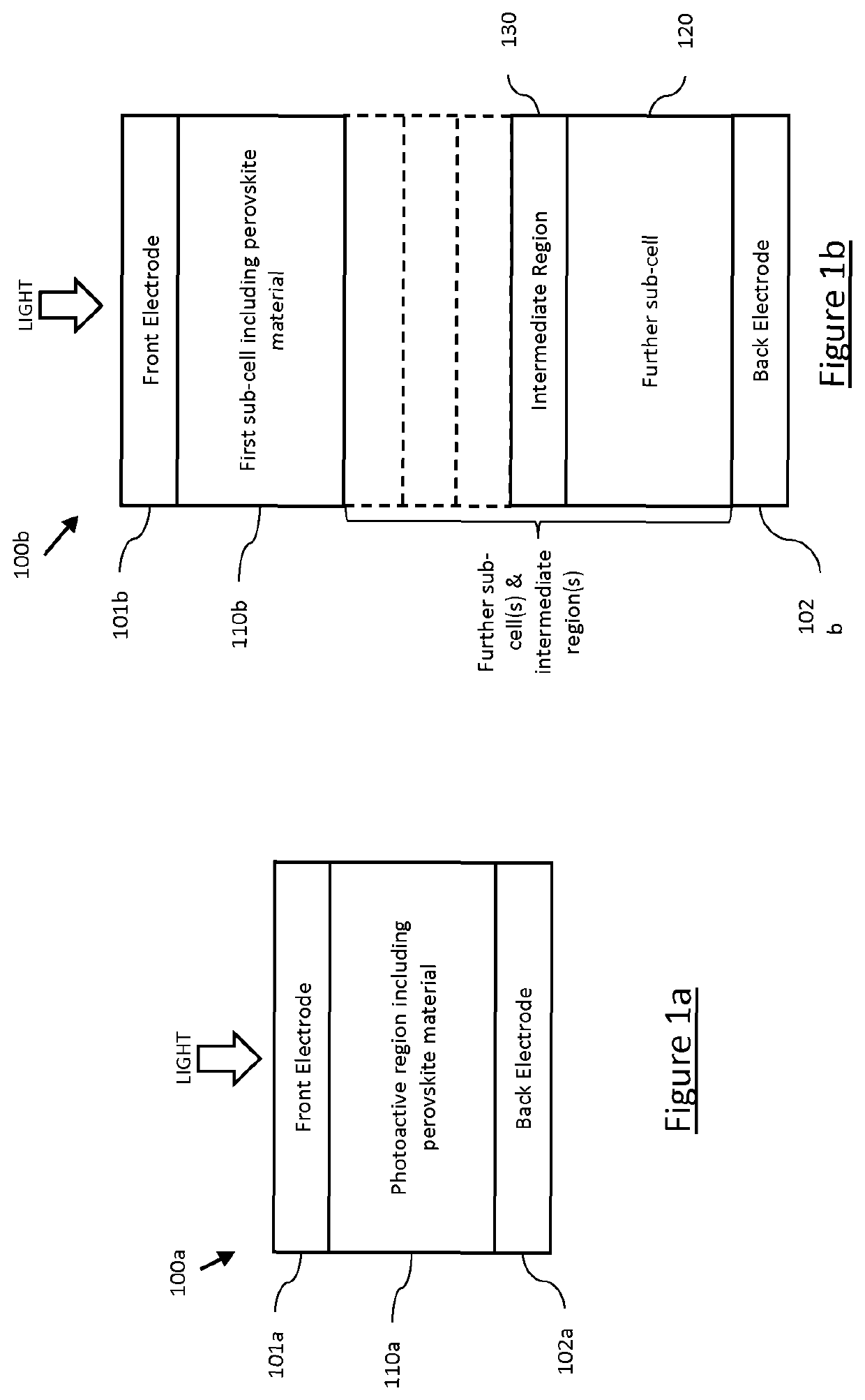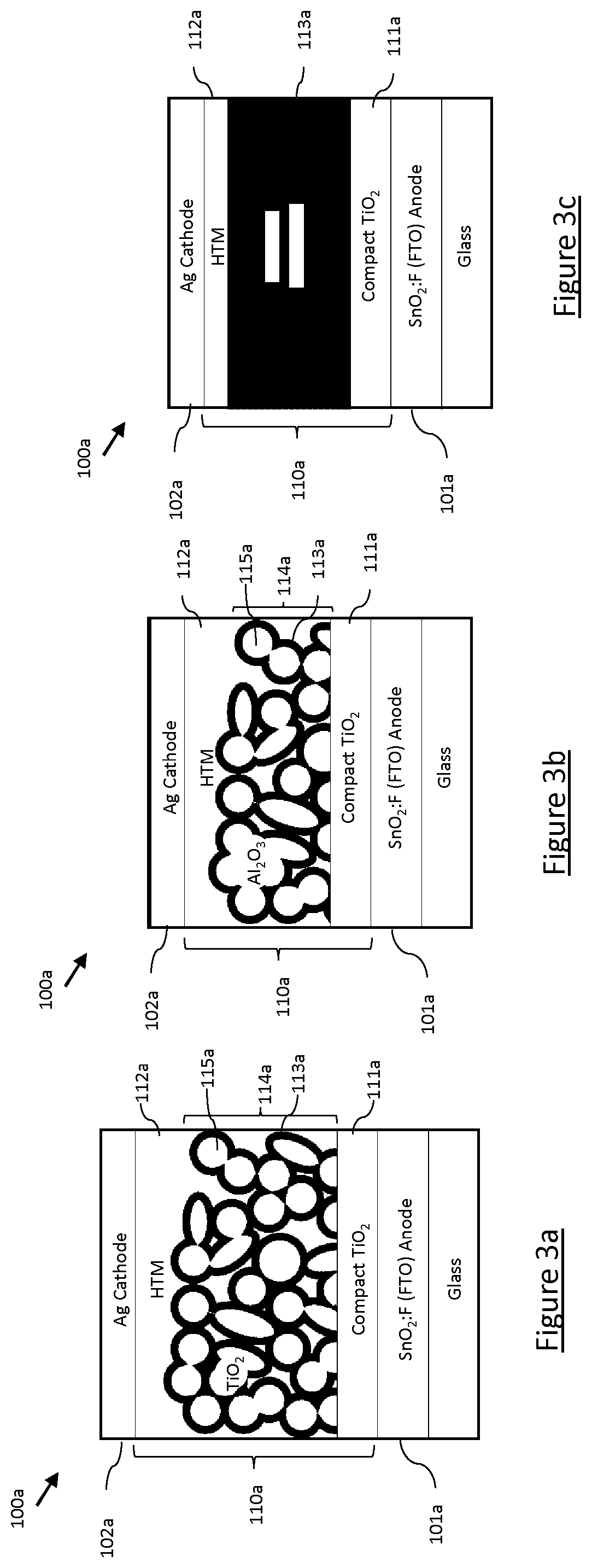Photovoltaic device
a photovoltaic and solar energy technology, applied in the field of photovoltaic devices, can solve the problems of high material cost, high cost of manufacturing devices that capture solar energy, and historically impede its widespread use, and achieve the effect of improving stability and improving stability
- Summary
- Abstract
- Description
- Claims
- Application Information
AI Technical Summary
Benefits of technology
Problems solved by technology
Method used
Image
Examples
examples
[0228]In the exemplary embodiments detailed below, perovskite materials were formed as films by spin coating deposition from a solution. In these embodiments, solid precursors for the perovskite materials were weighed and mixed together in a vial. This mixture was then loaded into a glovebox where the solvent was added for a final solution having 38 wt % of perovskite precursors.
[0229]For the dissolution of the solids the mixture was heated under continuous stirring at 100° C., forming a solution that was yellow and transparent. Once all the solids were in solution, the solution was removed from the hotplate and left to cool down to room temperature. The final solution was then filtered prior to deposition.
[0230]The solution was spin coated onto a substrates (i.e. glass, FTO or ITO) inside the glovebox with spin speeds ranging between 3000-4000 rpm, depending on the desired final film thickness, for 60 seconds. In these exemplary embodiments the resulting perovskite films had thickn...
PUM
| Property | Measurement | Unit |
|---|---|---|
| band gap | aaaaa | aaaaa |
| band gap | aaaaa | aaaaa |
| band gap | aaaaa | aaaaa |
Abstract
Description
Claims
Application Information
 Login to View More
Login to View More - R&D
- Intellectual Property
- Life Sciences
- Materials
- Tech Scout
- Unparalleled Data Quality
- Higher Quality Content
- 60% Fewer Hallucinations
Browse by: Latest US Patents, China's latest patents, Technical Efficacy Thesaurus, Application Domain, Technology Topic, Popular Technical Reports.
© 2025 PatSnap. All rights reserved.Legal|Privacy policy|Modern Slavery Act Transparency Statement|Sitemap|About US| Contact US: help@patsnap.com



